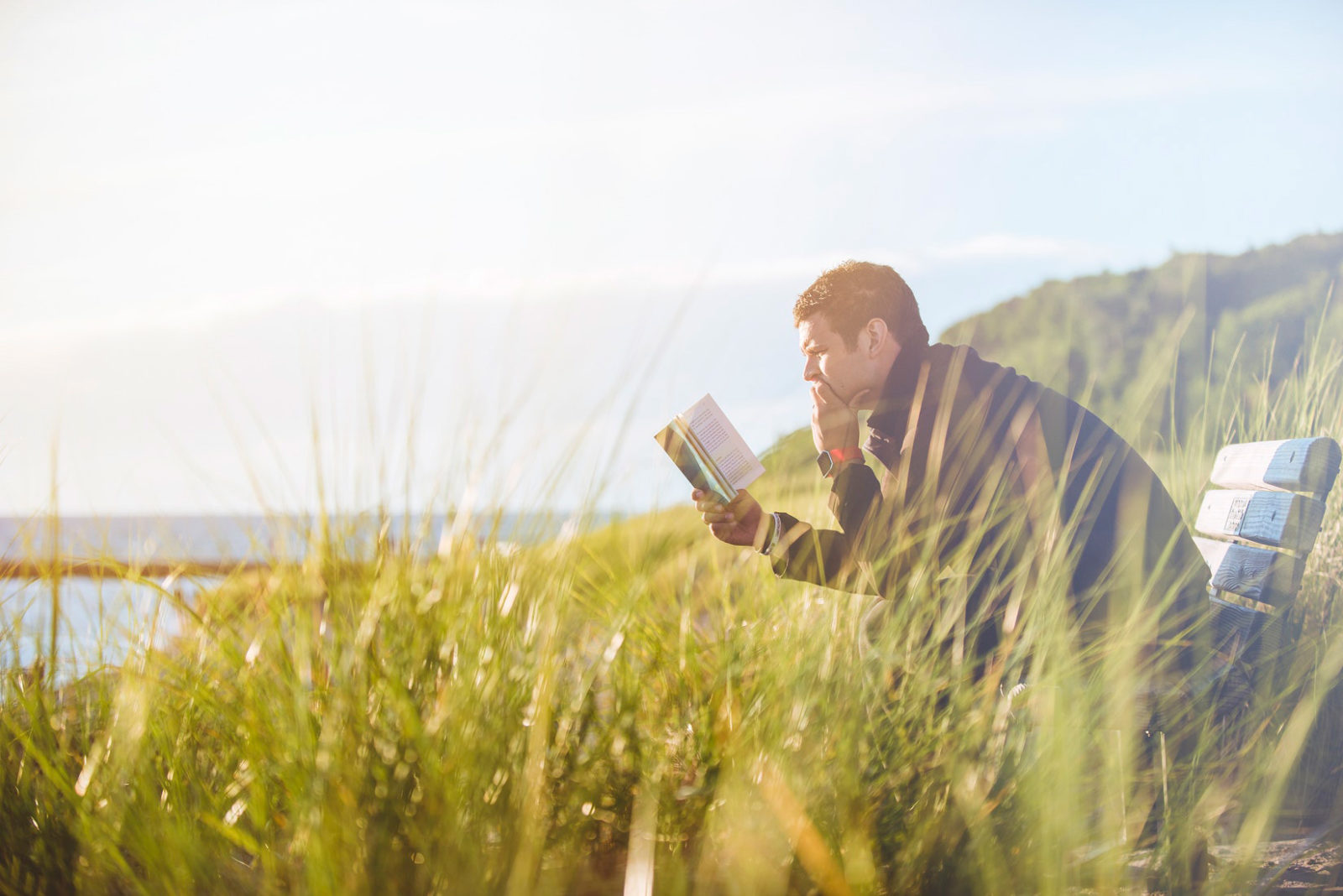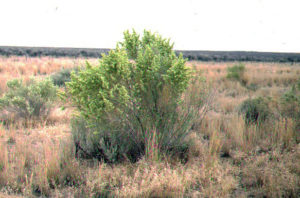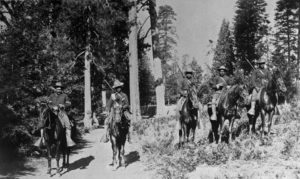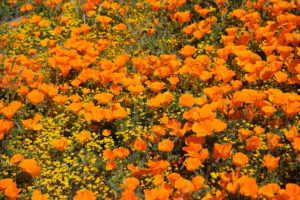I feel I’ve always been naturally curious. I wanted to know “why some things worked” and “how some things happened.” I never pursued it as a professional career since art felt more of a calling, and then I ended up in the classroom as social studies teacher. But I would still enjoy devouring readings on new scientific breakthroughs, histories of the natural world, and descriptions of mechanistic workings of the universe.
Remember, they are an exotic species in the Western United States, and are rapidly increasing their geographic range and range of habitats. Are they outcompeting or excluding native species in the process? How would we know? We have done almost nothing to monitor changes in the assemblage of mushroom species in areas before and and after the incursion of death caps.
Further Reading
Pringle et al, “The ectomycorrhizal fungus Amanita phalloides was introduced and is expanding its range on the west coast of North America,” Molecular Biology 2009
Lockhart et al, “Simultaneous emergence of multidrug-resistant Candida auris on 3 continents confirmed by whole-genome sequencing and epidemiological analyses,” Clinical Infectious Diseases 2017
Battalani et al, “Aflatoxin B1 contamination in maize in Europe increases due to climate change,” Scientific Reports 2016
Hold tight to durable wonder
Naturally abound
Observably around
The infinitely curious naturalist in you
Appreciating the delicate flutter of butterfly wings
The sweet pause that a birdsong brings
Maybe it’s a sunset
Or the lunette silhouette
Among the stars
That fires up awe and fascination
The joys of wandering exploration
Moments reminding us
Not just to survive and thrive
But to arrive
At this moment
Full of life
If you pause and wait
Closely look and listen
Appreciate
Fast forward to a few years ago, and as I engaged in more work with the outdoors, I really wanted to be a “naturalist.”
Mind you I don’t think I had fully grasped the full idea of what a naturalist was. The supposed dictionary definition is “an expert or student of natural history” or some derivation thereof. But that did not really specify to me what they did. I had seen interpretive park rangers, docents, and predominantly white elderly retired volunteers guide groups on walks and talk about the nature around them. Usually they were sharing information about what plants were around us, what animals to look for, and essentially how to identify things. My early education also enforced a visual of the “bearded naturalist” a la John Muir or the naturalist writer a la Henry Thoreau.
I wanted to know about the natural world and share that wonder with others. That is what led me to finally be fortunate enough to receive a California Naturalist certification. But what I surprisingly enjoyed was how the journey of being naturally curious combined with my work on the diversification of the conservation field so that I expanded my view of how I wanted to be a naturalist, not just to know about the natural world, but what were a myriad ways of connecting with it, and how other communities were also reflected in those connections.
Specifically, I noticed how we could start with a “Western European Enlightenment-derived” axiology and epistemology that relates humans to nature as outside observers and investigators of a natural world full of “objects” to investigate. This can be very useful. We use the scientific method to gather information and data for resource management, stewardship, and so on. But it can still relate to a tree or a flower as “something” to relate with cognitively — to be measured, identified, and essentially categorized and quantified.
It was a combination of experience, connection with others, and simply getting older that led me to explore “other ways of knowing,” beyond what I learned through my standard K-12 schooling. It came as I better understood my own indigenous roots, as I pushed myself in the exploration of “working across difference,” of picking up the “right book” at a bookshelf, of participating in ceremony, and of sitting with myself thinking about the intersection of quantum mechanics and philosophy.
I think about expanding awareness, definitions, and perspectives in service of the work we want to do, especially when conservation groups talk about “engaging new audiences” — but perhaps quickly dismiss their cognitive maps of the world.
In this exploration to better understand how different ethnicities, histories, and communities related to the natural world, I connected with other facets of the spectrum that included an epistemology and axiology that was less cognitive and human-object, and more what we call affective-active and human-multiverse. This can be seen in many indigenous traditions and communities. Essentially, this says we can also know through activity, symbolic imagery, and rhythm. And that the highest value lies in a balance of relations among humans, other beings, and other spirits of past, present, and future. Hence you can begin to better understand and value the importance of a “rain dance,” or why wildlife are familial members.
Take a moment to sit with this if it is new to you. As you would with any natural observation: pause, listen, and appreciate. This is not relegating indigenous values to “superstition” or some non-systematic, “non-scientific” way of knowing the world. That would be forcing your lens on a systemic way of knowing the world that has worked for many generations. At its most basic starting point, this acknowledges the importance of relationship and connection in an ecological whole, something we have begun to stress more in traditional conservation.
One of the things this has meant for me as a naturalist is that my curiosity of and about the natural world quickly expanded from “what is this, what do you call it?” to “I’m curious what familial relationship this has or had with communities.” I also noticed slight changes when I would hike with relatives in rural Mexico and, rather than a traditional frame of “this is what it is, and this is how you identify it,” it would be “this is what we call it, and this is what it is beneficial for.” There were references of community embedded in the language.
To be clear, this is not me devaluing the role and importance of “science,” or simplifying its approach. I also do not want to venture off into what constitutes science. Rather, I continuously think about expanding awareness, definitions, and perspectives in service of the work we want to do, especially when conservation groups talk about “engaging new audiences” — but perhaps quickly dismiss their cognitive maps of the world. Or how we underrepresent their leadership. Imagine the visualization that comes from seeing Native American elders as naturalists like Muir and Thoreau, right down to how knowledgeable my grandfather is in rural Mexico.
Can these knowledge systems converge? I could simply say “sure, that is the beautiful complexity of reality.” However, to be fair, I can at least manage to share at least two ways to approach this.
One is practical examples and case studies of incorporating traditional ecological knowledge (TEK) into resource management—the ways we have opened up to accepting that indigenous communities “knew” what they were doing, not just in terms of their relationship with the land, but their management of resources. A classic example has become fire management. However, this also applies to water management, fisheries, wildlife, etc. We may be far off from ever returning stolen lands, but some starts include Native American inclusion in the decision-making of stewardship and resource management.
The other is through the simple practice of mindfulness … at least the idea of intentional sustained attention, a practice that should not be a stranger to a naturalist — connecting back to the skill and the experience of observation. We sometimes preach the value of mindfulness in so many areas of our life. Science and the observation of the natural world, I would argue, should be no different.
The naturally and categorically curious naturalist in me still want to know “what is that” but it is not limited in its approach. In addition to “knowing” in the traditional sense, I also know it is sometimes ok not to know, and that I can approach a tree or flower and ask it or introduce myself as I would any new introduction in a social setting. It may seem or sound silly to some, but it offers respect and reminds me how differently we would treat and engage with certain aspects of the natural world if they were familial and community members beyond just “resources,” “knowable objects,” or “things.”
As a recent phrase elicited in regards to land conservation and stewardship: “Are you protecting the land, the people, ceremony, traditions?” To which the response is “what if they are all the same?”
Wonders naturally abound, in many ways. I’m curious, how have you expanded your naturalist eyes?





